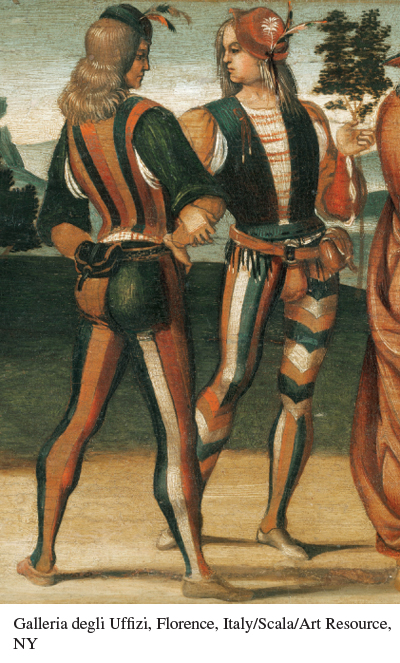A History of Western Society: Printed Page 382
Living in the Past
Male Clothing and Masculinity
I n the Renaissance wealthy people displayed their power and prosperity on their bodies as well as in their houses and household furnishings. Expanded trade brought in silks, pearls, gemstones, feathers, dyes, and furs, which tailors, goldsmiths, seamstresses, furriers, and hatmakers turned into magnificent clothing and jewelry. Nowhere was fashion more evident than on the men in Renaissance cities and courts. Young men favored multicolored garments that fit tightly, often topping the ensemble with a matching hat on carefully combed long hair. The close-



QUESTIONS FOR ANALYSIS
- Male clothing in any era communicates social values and ideas about masculinity. What does Renaissance fashion suggest about notions of manhood in this era?
- In The Prince, Machiavelli used the word effeminate to describe the worst kind of ruler, though the word carried different connotations than it does today. Strong heterosexual passion was not a sign of manliness and could make one “effeminate” — that is, dominated by women as well as similar to them. Look at the portrait of Charles V here and at the other portraits in this chapter. How did male rulers visually symbolize their masculinity?